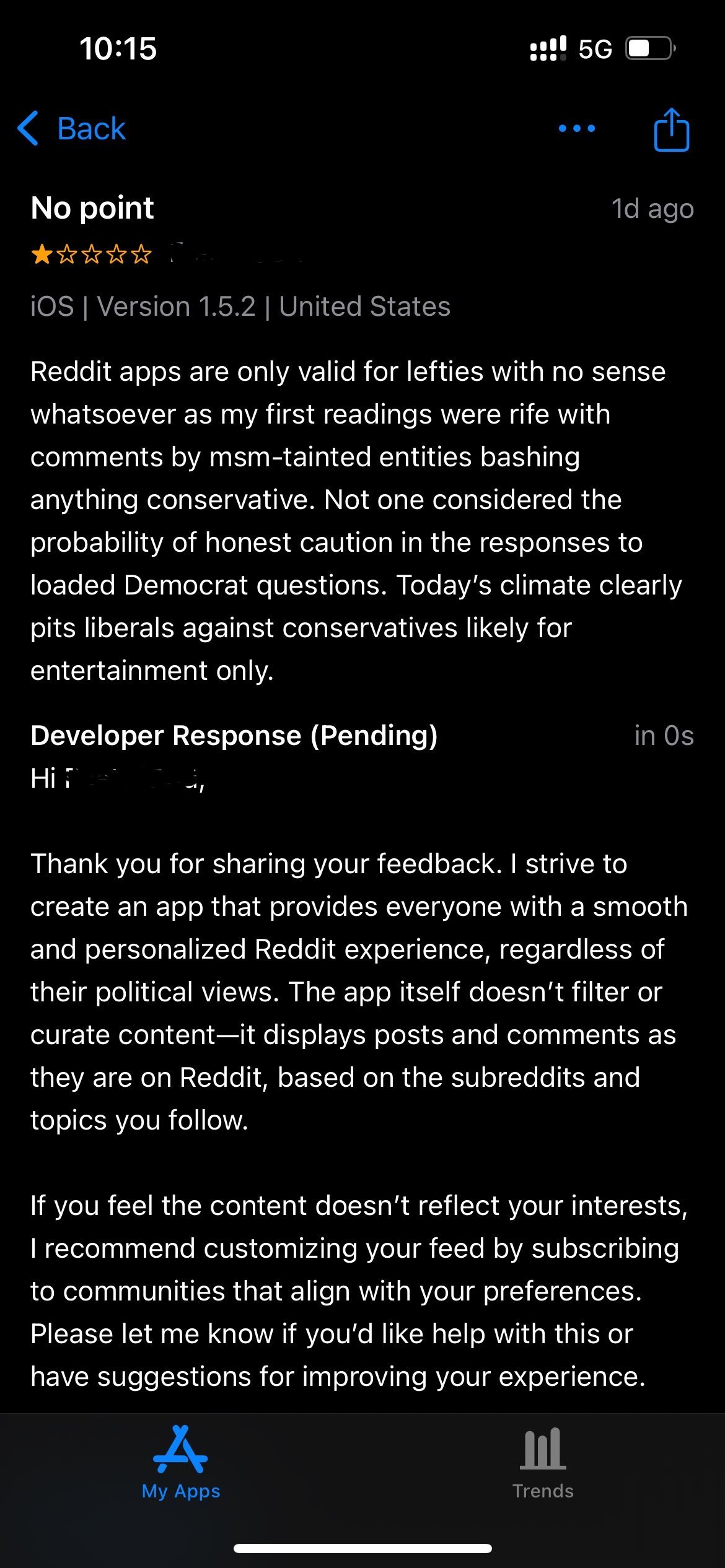Kids are making deepfakes of each other, and laws aren’t keeping up
-
Schools and lawmakers are grappling with how to address a new form of peer-on-peer image-based sexual abuse that disproportionately targets girls.
-
Schools and lawmakers are grappling with how to address a new form of peer-on-peer image-based sexual abuse that disproportionately targets girls.
The only defense is to train AI to draw guys with micropenises. As long as kids being kids is a defense for this shit (and to be fair, kids are pretty fucking stupid and need the freedom to grow out of that) rule makers have no power here. At least insofar as the AI to do this can be run locally on a potato.
-
The only defense is to train AI to draw guys with micropenises. As long as kids being kids is a defense for this shit (and to be fair, kids are pretty fucking stupid and need the freedom to grow out of that) rule makers have no power here. At least insofar as the AI to do this can be run locally on a potato.
I think the micropenis thing wold just encourage this further
-
I think the micropenis thing wold just encourage this further
It's obviously not a serious suggestion, but the reality is the tools are out there and Pandora's box can't be put back on the shelf. Kids can't be held accountable in a meaningful way. This is just an issue we are going to face basically forever now.
There is a window of time during which most kids are little sociopaths and you can't appeal to any better nature. They have the means and often no internal or external restraint. And so mutually assured destruction is my tongue in cheek answer.
-
Schools and lawmakers are grappling with how to address a new form of peer-on-peer image-based sexual abuse that disproportionately targets girls.
Honestly I think we need to understand that this is no different to sticking a photo of someone's head on a porn magazine photo. It's not real. It's just less janky.
I would categorise it as sexual harassment, not abuse. Still serious, but a different level
-
Schools and lawmakers are grappling with how to address a new form of peer-on-peer image-based sexual abuse that disproportionately targets girls.
Lawmakers are grappling with how to address ...
Just a reminder that the government is actively voting against regulations on AI, because obviously a lot of these people are pocketing lobbyist money
-
It's obviously not a serious suggestion, but the reality is the tools are out there and Pandora's box can't be put back on the shelf. Kids can't be held accountable in a meaningful way. This is just an issue we are going to face basically forever now.
There is a window of time during which most kids are little sociopaths and you can't appeal to any better nature. They have the means and often no internal or external restraint. And so mutually assured destruction is my tongue in cheek answer.
AI can do penises just fine though, there's just no market demand for it so quick and easy deep fake sites are focused on female bodies.
But I disagree with this anyway, this will be the "bullied kid brings a knife to class" of AI.
-
Honestly I think we need to understand that this is no different to sticking a photo of someone's head on a porn magazine photo. It's not real. It's just less janky.
I would categorise it as sexual harassment, not abuse. Still serious, but a different level
Schools generally means it involves underage individuals, which makes any content using them csam. So in effect, the "AI" companies are generating a ton of csam and nobody is doing anything about it.
-
Honestly I think we need to understand that this is no different to sticking a photo of someone's head on a porn magazine photo. It's not real. It's just less janky.
I would categorise it as sexual harassment, not abuse. Still serious, but a different level
I hope it might lead to a situation of dirty pics/vids not being a problem for the people in it any more, as it could be a deepfake. Like there were cases where a surfacing dirty pic was used for blackmail, ruined someones career or got them kicked out of some comittee, but since it could be fabrication now, I hope this will beva thing of the past, soon.
-
Schools generally means it involves underage individuals, which makes any content using them csam. So in effect, the "AI" companies are generating a ton of csam and nobody is doing anything about it.
Disagree. Not CSAM when no abuse has taken place.
That's my point.
-
I hope it might lead to a situation of dirty pics/vids not being a problem for the people in it any more, as it could be a deepfake. Like there were cases where a surfacing dirty pic was used for blackmail, ruined someones career or got them kicked out of some comittee, but since it could be fabrication now, I hope this will beva thing of the past, soon.
That could be a socially healthy place to end up at. I don't see it anytime soon though. Just look at the other response I got.
-
AI can do penises just fine though, there's just no market demand for it so quick and easy deep fake sites are focused on female bodies.
But I disagree with this anyway, this will be the "bullied kid brings a knife to class" of AI.
You're disagreeing with my unserious suggestion? I just... okay. No. Micropenises aren't a solution. I just don't think there is one.
If you want to disagree with that, let's hear it. I have 15 and 13 year old daughters. Anyone can buy a $400 computer, install Linux, install AI, and undress people all day long. There is no legal restraint capable of stopping that, only punishing it.
Shut down model distribution and it'll move to torrent. Put the kids in the legal system and they are going to face lifelong consequences for 12-year-old assholery. (To be fair, victims often face long repercussions for being targeted, but that's not imposed by the state which demands a higher standard.) Hold parents accountable and it will disproportionately impact families who spend more hours working and can't supervise their kids 24/7.
So I'm short on answers, but open to discussion.
-
Honestly I think we need to understand that this is no different to sticking a photo of someone's head on a porn magazine photo. It's not real. It's just less janky.
I would categorise it as sexual harassment, not abuse. Still serious, but a different level
Yes, finding out that your peers have been sharing deep fake pornography of you is absolutely fine and a normal thing for young girls to go through in school. No girls have ever killed themselves because of this exact sort of thing, surely. This definitely will not add in any way to the way women and girls are made to feel entirely disgustingly dehumanized by every man or boy in their lives. Groups of men and boys reducing them and their bodies down to vivid sexual fantasies that they can quickly generate photo realistic images of.
If the person in the image is underaged then it should be classified as child pornography. If the woman who's photo is being used hasnt consented to this then it should be classified as sexual exploitation.
Women and girls have faced degrees of this kind of sexual exploitation by men and boys since the latter half of the 20th century. But this is a severe escalation in that behavior. It should be illegal to do this and it should be prosecuted when and where it is found to occur.
-
Schools generally means it involves underage individuals, which makes any content using them csam. So in effect, the "AI" companies are generating a ton of csam and nobody is doing anything about it.
Do deepfake explicit images created from a non-explicit image actually qualify as CSAM?
-
Disagree. Not CSAM when no abuse has taken place.
That's my point.
If someone put a camera in the girls’ locker room and distributed photos from that, would you consider it CSAM? No contact would have taken place so the kids would be unaware when they were photographed, is it still abuse?
If so, how is the psychological effect of a convincing deepfake any different?
-
Lawmakers are grappling with how to address ...
Just a reminder that the government is actively voting against regulations on AI, because obviously a lot of these people are pocketing lobbyist money
Even in countries a lot less corrupt than the US this is an issue.
Especially because the US government/companies doesn't do jack shit for people
-
Do deepfake explicit images created from a non-explicit image actually qualify as CSAM?
Drawing a sexy cartoon that looks like an adult, with a caption that says "I'm 12", counts. So yeah, probably.
-
Yes, finding out that your peers have been sharing deep fake pornography of you is absolutely fine and a normal thing for young girls to go through in school. No girls have ever killed themselves because of this exact sort of thing, surely. This definitely will not add in any way to the way women and girls are made to feel entirely disgustingly dehumanized by every man or boy in their lives. Groups of men and boys reducing them and their bodies down to vivid sexual fantasies that they can quickly generate photo realistic images of.
If the person in the image is underaged then it should be classified as child pornography. If the woman who's photo is being used hasnt consented to this then it should be classified as sexual exploitation.
Women and girls have faced degrees of this kind of sexual exploitation by men and boys since the latter half of the 20th century. But this is a severe escalation in that behavior. It should be illegal to do this and it should be prosecuted when and where it is found to occur.
Thank you. Focusing on the harm the victims is the right way to understand this issue. Too many people in here hunting for a semantic loophole.
-
If someone put a camera in the girls’ locker room and distributed photos from that, would you consider it CSAM? No contact would have taken place so the kids would be unaware when they were photographed, is it still abuse?
If so, how is the psychological effect of a convincing deepfake any different?
Taking secret nude pictures of someone is quite a bit different than....not taking nude pictures of them.
It's not CSAM to put a picture of someone's face on an adult model and show it to your friend. It's certainly sexual harassment, but it isn't CSAM.
-
That could be a socially healthy place to end up at. I don't see it anytime soon though. Just look at the other response I got.
Anyone with half a brain will certainly claim as much. Even if people don't fully believe it, it will blunt the most serious of social consequences.








